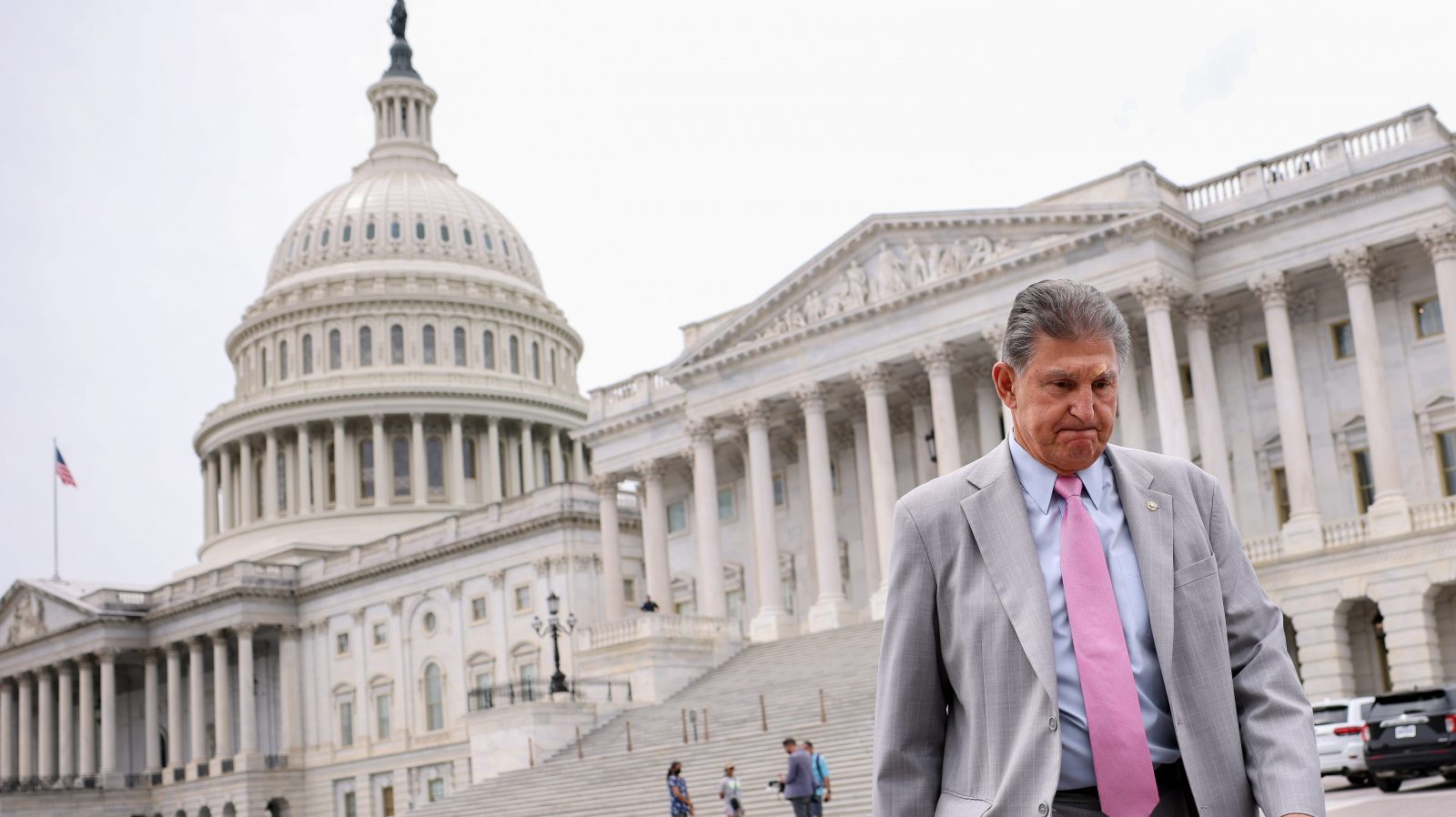As the West burns and the South soaks, Democrats on Capitol Hill are gunning for an actual federal climate plan, one that would bring down emissions across the United States and put the country on track to meet the goals of the Paris Agreement. But in order to deliver on what may be the federal government’s last best chance to pass climate policy this decade, progressives will need to figure out how to convince the party’s moderates to play along.
On Tuesday, the House Energy and Commerce Committee approved the details of legislation that, if passed, would get the U.S. closer to President Joe Biden’s goal of eliminating all carbon emissions from the power sector by 2035. The bill is called the Clean Electricity Performance Program, or CEPP. It would essentially use federal money to pay utilities to pick up the pace on selling clean electricity to Americans.
More specifically, the legislation says that if a company that sells electricity to consumers increases its share of clean energy — we’re talking wind, solar, geothermal, nuclear, and hydroelectricity — by 4 percent every year, it can tap into the CEPP’s $150 billion grant program. Companies that don’t hit that 4 percent target have to pay a penalty to the government, and when they try to hit the target the next year, they’ll have to meet 4 percent plus whatever percent they were short the year before. The program would start in 2023 and run through the end of the decade.
The CEPP isn’t just about ramping up the megawatts of clean energy feeding into the grid — the legislation would also prompt utilities to train workers and pay them good wages by limiting the amount of incentives that companies can get by increasing their shares of clean energy 4 percent. For example, if a company doesn’t utilize jobs training programs and pay competitively, it’ll only get one-fifth of the full value of some of the CEPP’s incentives.
The CEPP is part of a much larger $3.5 trillion budget plan that Democrats have been finessing for months now. As it stands right now, the plan also includes $13.5 billion for building electric vehicle charging stations and converting heavy-duty trucks to electric, a fee assessed on oil and gas facilities that emit the potent greenhouse gas methane, and $8 billion for electrical grid upgrades, among other provisions. The plan would also expand Medicare and renegotiate drug prices for people enrolled in the program, create a universal pre-K program, fund comprehensive paid family leave and medical leave, and make other investments in the nation’s “human” infrastructure.
But the plan has to fit a specific set of criteria if it is to become law. Democrats plan to push the $3.5 trillion budget plan through Congress using a process called budget reconciliation. Reconciliation allows legislators to incorporate spending and tax measures into the federal budget — and to bypass the filibuster process that allows the minority party to block any Senate bill that doesn’t have 60 votes. The plan has to be “budget germane” in order to get past the House and Senate parliamentarians — the nonpartisan advisers in charge of deciding whether a budget plan meets the reconciliation guidelines. The CEPP has been carefully crafted as a combination of incentives and penalties that Democrats believe meet the criteria for reconciliation packages.
The biggest obstacle in the way of the CEPP becoming law isn’t the parliamentarians; it’s centrist Democratic Senators Joe Manchin of West Virginia and Kyrsten Sinema of Arizona. Senate Democrats’ bid to pass the budget plan via reconciliation means they need every single member of their party to play along. No Republicans are expected to approve the bill, so if a single Democrat defects the party won’t have the 50 votes it needs to carry its budget plan over the finish line.
This week, Manchin came out swinging against the plan. In a Sunday interview with CNN’s State of the Union, the coal-state senator said Senate Majority Leader Chuck Schumer “will not have my vote on the 3.5.” He later told NBC that he was a “hard no” on the package. On the CEPP, specifically, Manchin said, “It makes no sense.” Congress shouldn’t pay utilities to reduce their emissions because the market, he argued, has already influenced utilities to become greener over the past two decades.
Manchin said he wants to whittle the package down to a $1.5 trillion plan. That doesn’t sit well with progressive Senator Bernie Sanders of Vermont, who was quick to shoot back when asked if $1.5 trillion was an acceptable number to him on CNN. “No, it’s absolutely not acceptable to me,” he said. “I don’t think it’s acceptable to the president, to the American people, or to the overwhelming majority of the people in the Democratic caucus.”
This isn’t Sanders and Manchin’s first showdown. They practiced this choreography earlier this summer as the moderate and progressive factions of the Democratic party hashed out the details of a $1 trillion infrastructure package. Manchin prevailed in that fight, working with moderates from both parties to make the infrastructure plan about $1 trillion cheaper than the package Biden originally envisioned. What didn’t make it into the infrastructure package is now, for the most part, in the reconciliation bill. And the president seems intent on getting this one passed intact. On Wednesday, Biden met with Manchin and Sinema, separately, to discuss the budget plan. The same day, White House Press Secretary Jen Psaki said that the White House expects the package to “move forward” before the next big U.N. climate summit, which is scheduled for the first two weeks of November. That deadline suggests that Biden wants to arrive at the summit with a federal climate plan in hand.
“We have to think big,” Biden said of the budget plan after touring areas damaged by wildfires in California earlier this week. “Thinking small is a prescription for disaster.”



